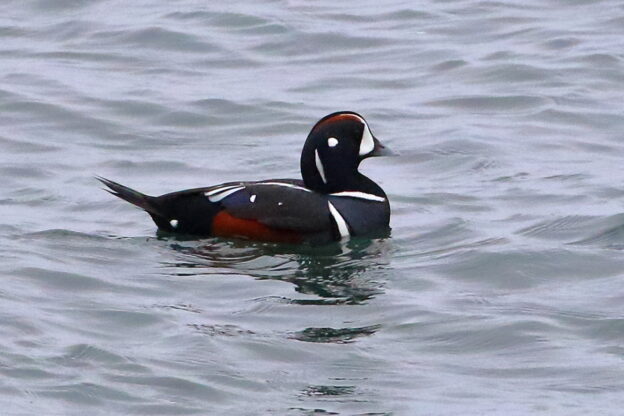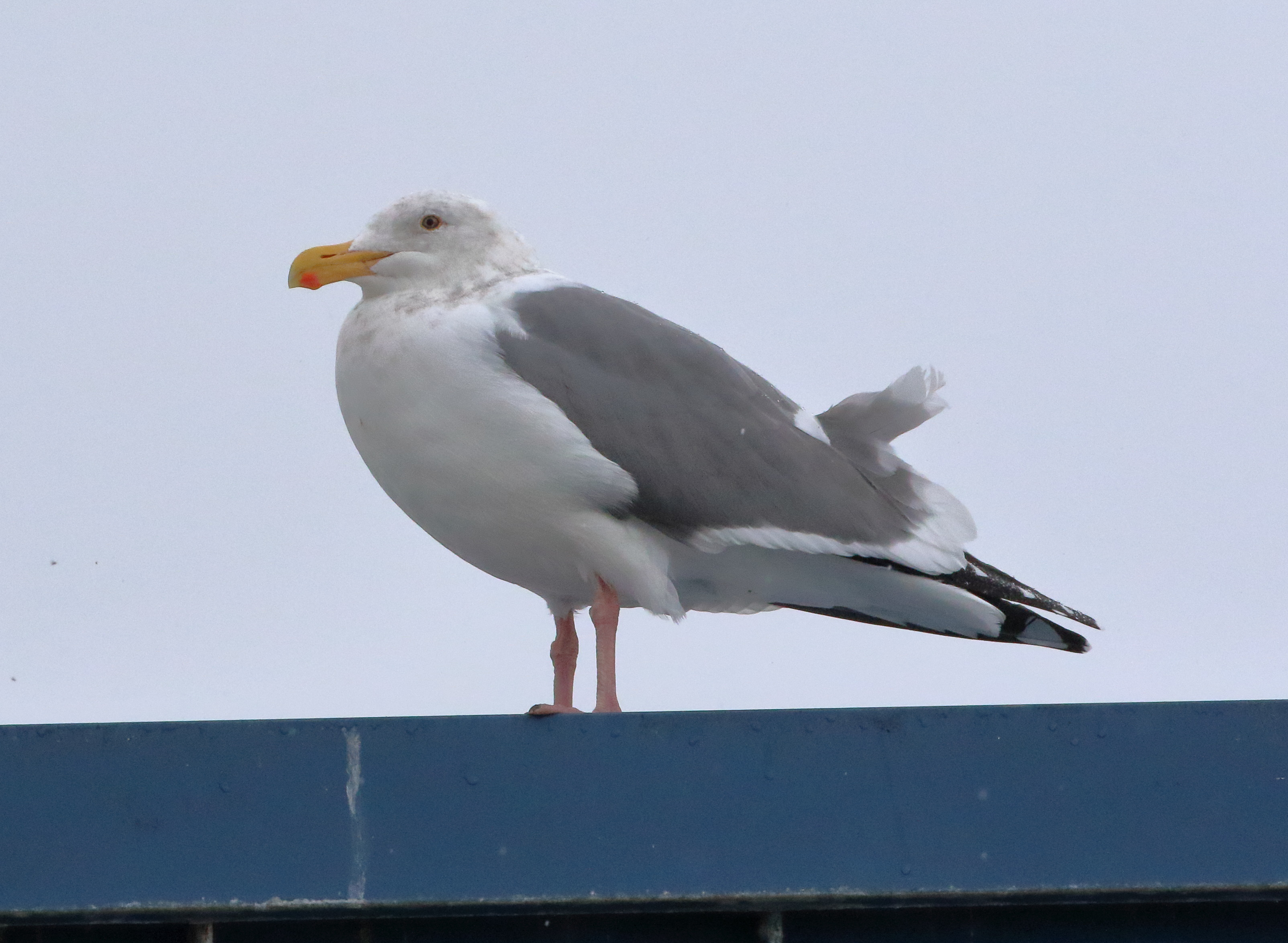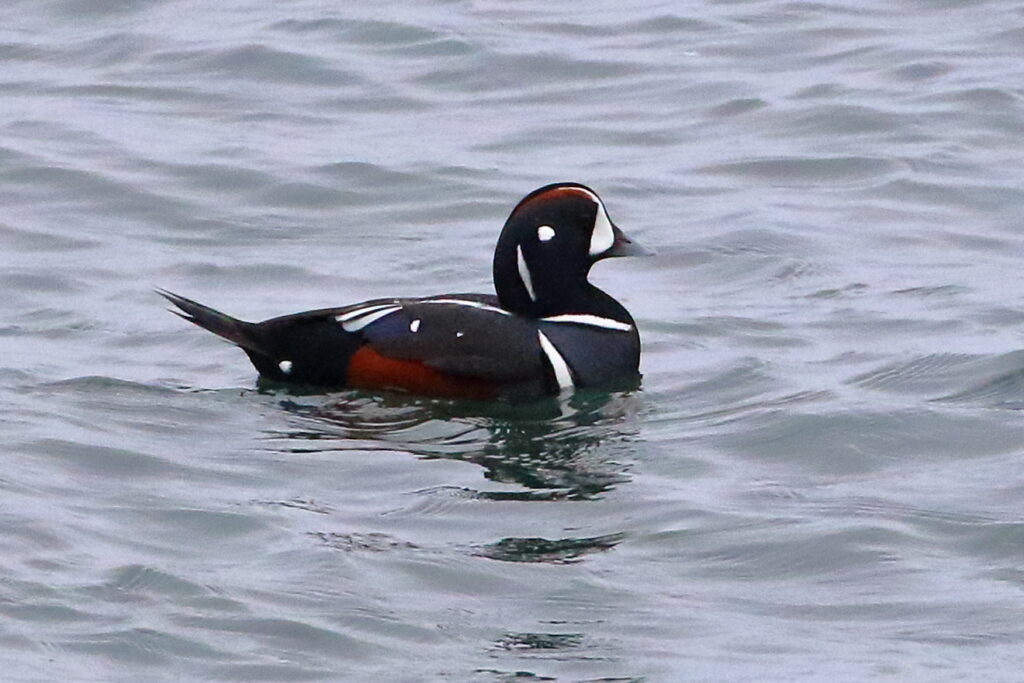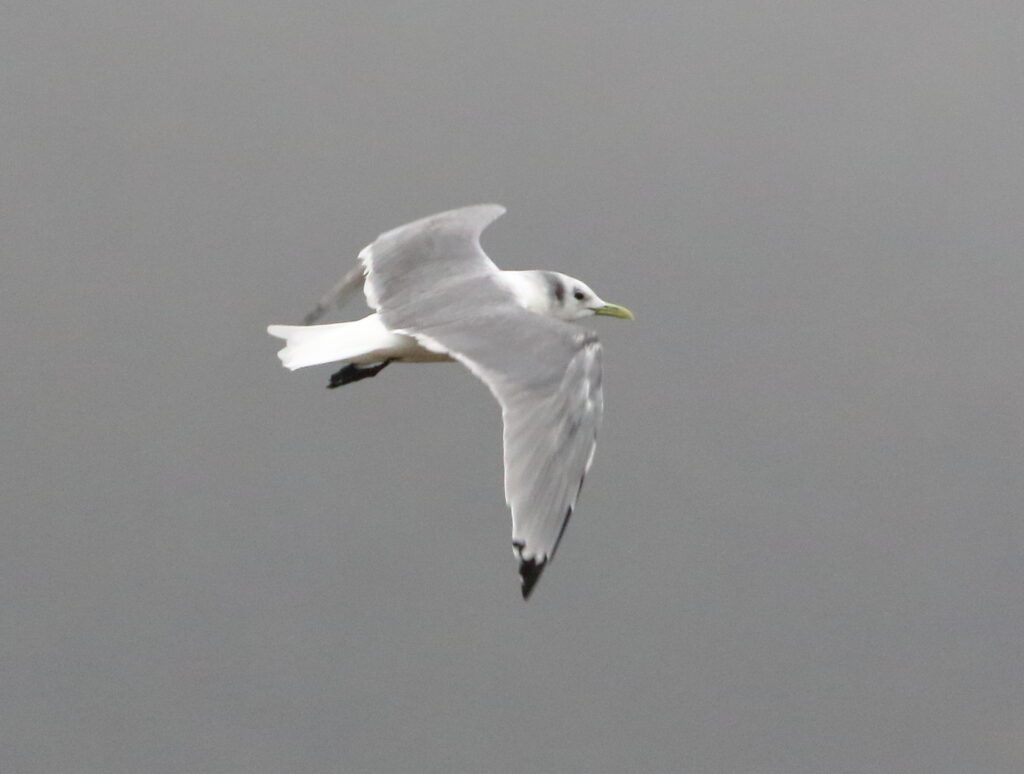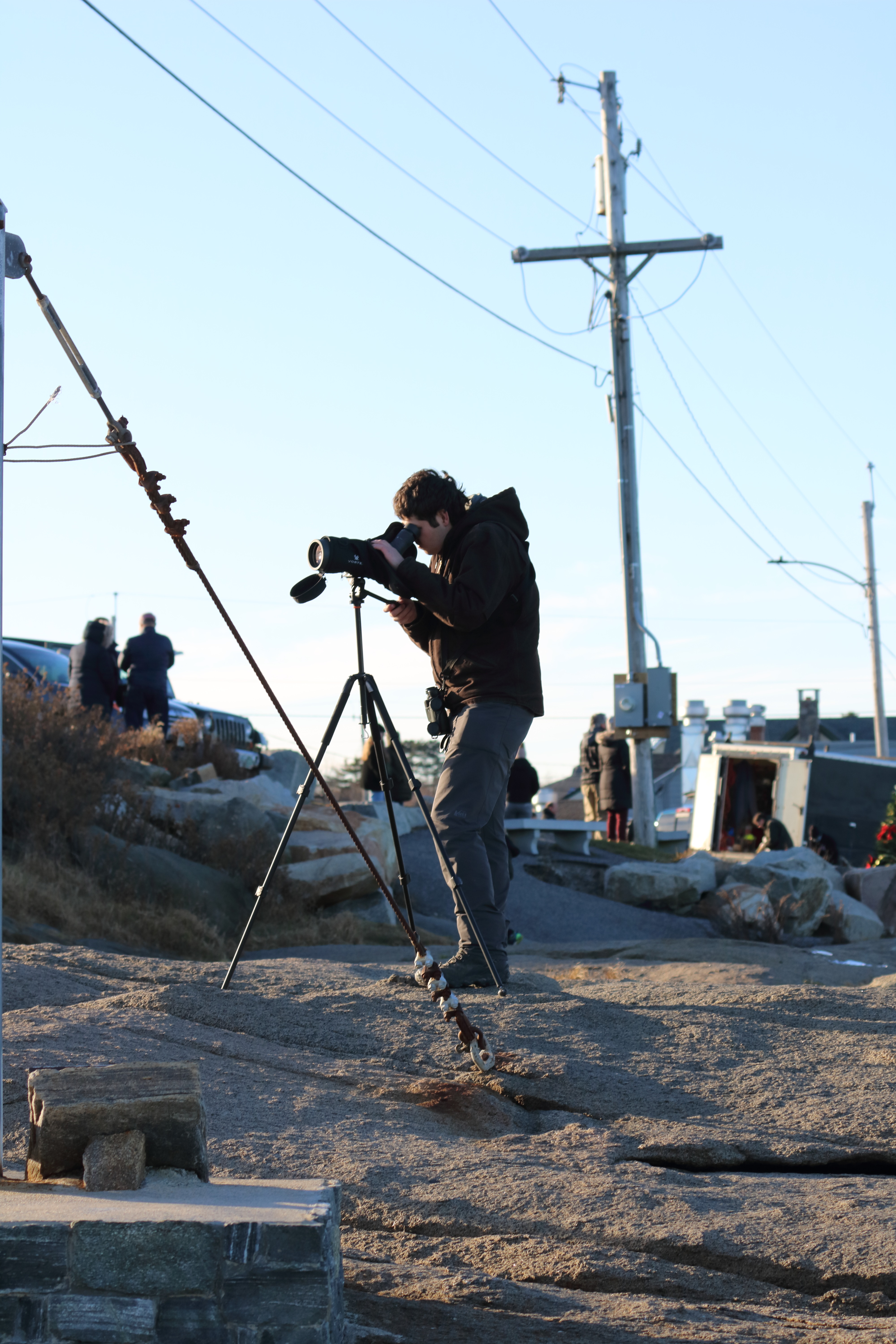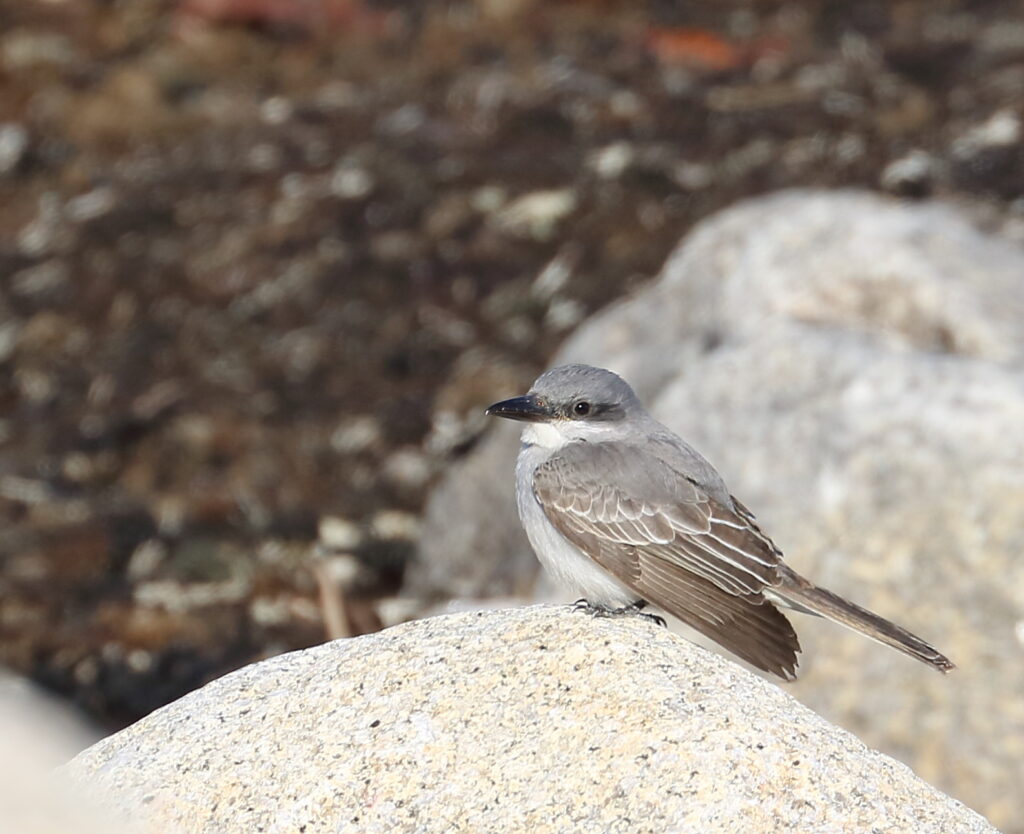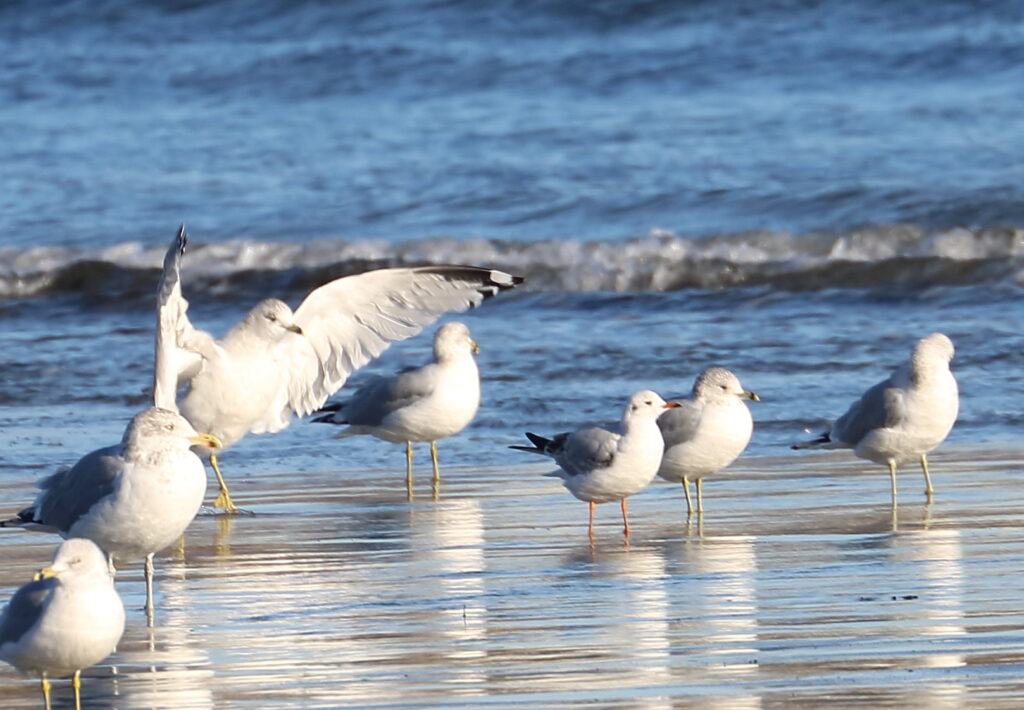Happy New Year Everyone! Thanks for reading, and may the birds be with all of us in 2022!
After zooming past my former Big Year record, as highlighted in our last post, Braden and I woke the next morning with the promise of a mostly rainless day—and therefore a chance to bird some exciting new places we’d never birded before. Armed with recommendations Braden had gleaned from Oregon native Miles Scheuering (see “When Montana Birders Collide”), we first hit a place just north of Cannon Beach called Seaside Cove, hoping to see Braden’s Number One Target Bird for the entire trip: Rock Sandpiper.
I didn’t know much about Rock Sandpipers except that they breed in far north Alaska and the Aleutians, with a similar coastal distribution in eastern Asia. They can be found in small numbers along the West Coast to Northern California on rocky shores, and are basically the West Coast equivalent of Purple Sandpiper. Unfortunately, they are decidedly uncommon, and when we pulled up to Seaside Cove we saw nothing but a few surfers braving the roaring, messy waves. We walked along the beach anyway, though, and began scanning the rocks, and soon movement caught our eyes: a couple of dozen Surfbirds scattered along the shore, together with a Black Turnstone here and there. As we were walking back toward the car, though, Braden suddenly shouted, “I’ve got him!” Sure enough, next to a Black Turnstone, a bird that looked a lot like a Surfbird—but with a longer, curved bill similar to that of a Dunlin—picked barnacles off the rocks!
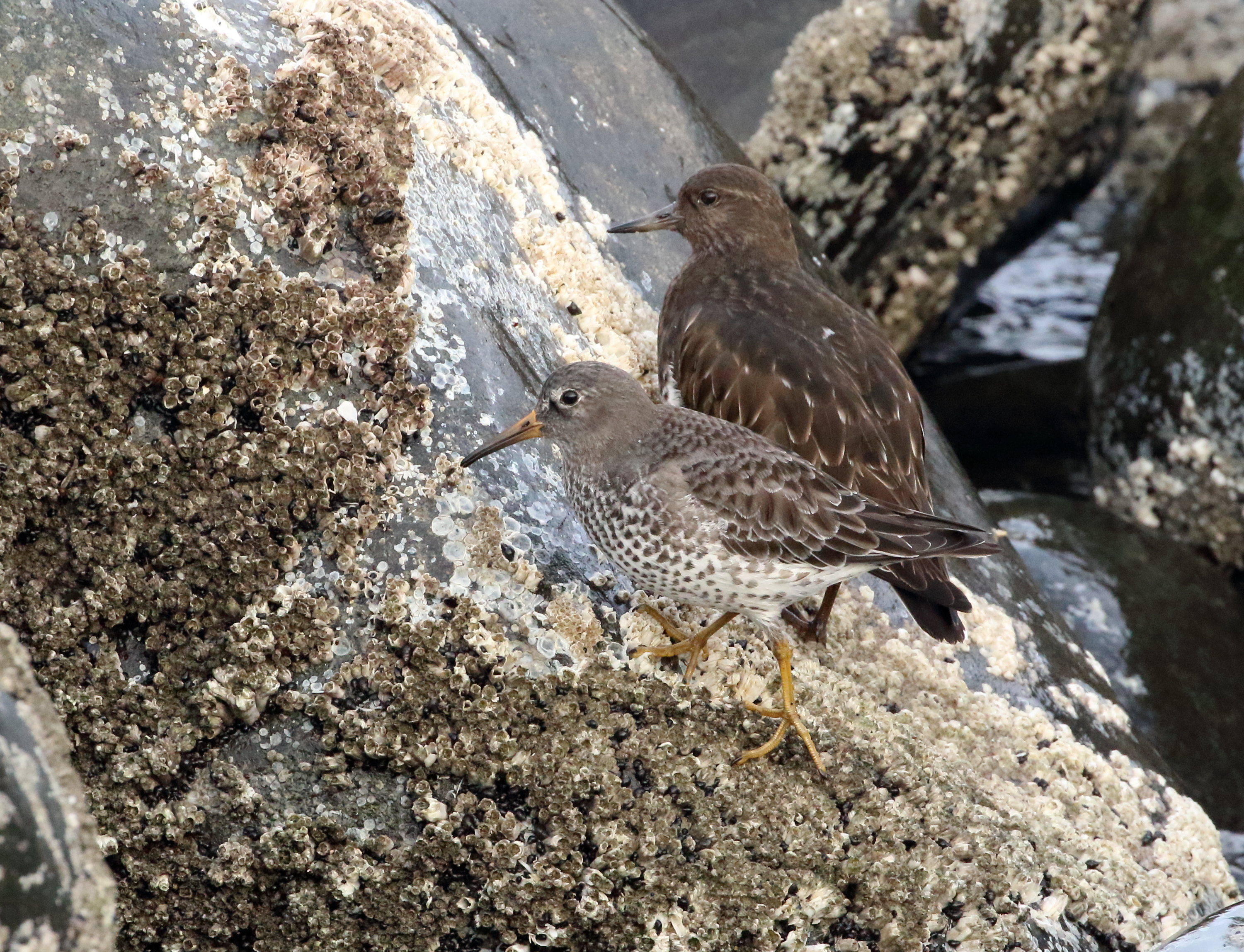
Thrilled, we watched the ROSA for a good fifteen minutes, just enjoying this rare bird that we were unlikely to see again anytime soon. After finding this Lifer for both of us, we climbed back into the trusty minivan feeling like the rest of the day would be gravy. And what gravy it turned out to be!
NOTE: To watch a live-action video of our Rock Sandpiper discovery, check out our YouTube video here: https://youtu.be/oFaNC3aR8CQ
After a couple of stops at Necanicum River Estuary to look at distant Dunlins and Sanderlings, and less distant Surf Scoters, we drove Del Rey Beach in an unsuccessful bid for endangered Snowy Plovers, though we may have run over six or ten while speeding along the sand. Oh well.
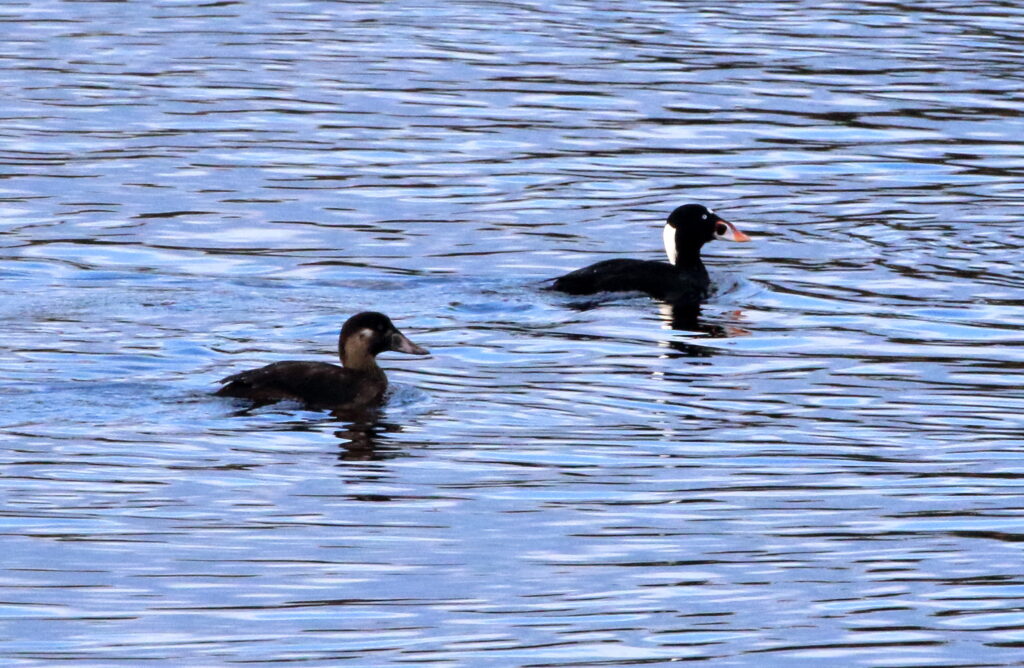
Then, we moved on to Sunset Beach Recreation Area. Starting down the trail, I didn’t expect much, but soon, WHOA! Songbirds started popping up everywhere: Fox Sparrows (hard to observe in Montana), Yellow-rumped Warblers, Spotted Towhees, Black-capped and Chestnut-backed Chickadees—even a Bewick’s Wren made an appearance. Two species were stars of the show: at least ten spectacularly-plumed Varied Thrushes that flew and perched around us, and a pair of Wrentits, birds that had been high on my target list, but seemed like an uncertain possibility. Both species are some of our favorite birds, and this was by far our best, most intimate look at the thrushes, and one of the best of the Wrentits, which were noticeably darker than those we’d observed in California. Incredibly, our day was far from finished!
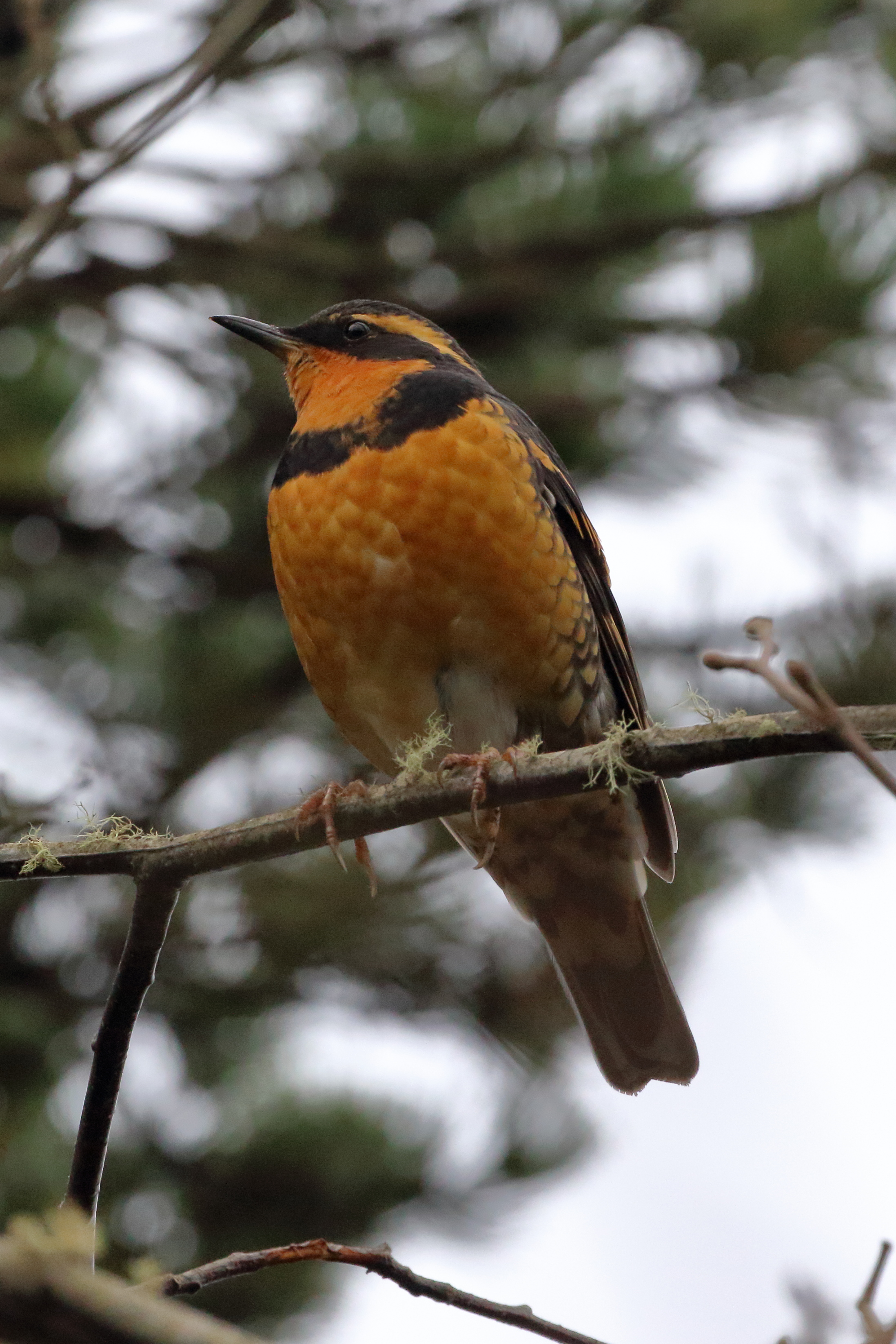
Varied Thrushes are not only some of our favorite ABA birds, they are without a doubt some of the most stunning visually! 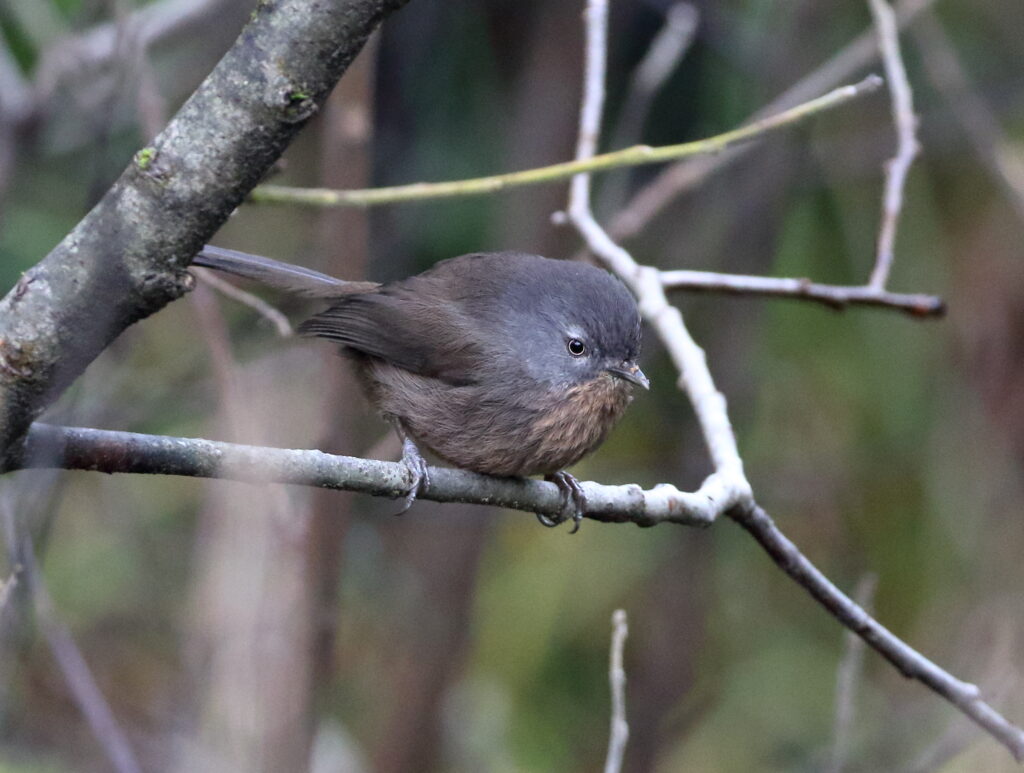
We also love Wrentits–and noticed that those in Oregon are significantly darker than the ones we’d seen in California.
As the morning zoomed on, we continued to pick up species, grabbing Braden’s FOY (First Of Year) Cackling Geese, and breaking another of his trip goals, exceeding 100 species on his Oregon Life List. BOO-YA! Minutes later, at another spot Miles had recommended, Wireless Rd. near Astoria, we found more than 60 Short-billed (formerly Mew) Gulls in a cow pasture, along with yet ANOTHER ABA LIFER, Lesser Black-backed Gull. Then, looking the other direction, Braden watched a large flock of American Wigeon take off and shouted, “I think I see orange!” We spun the scope around, and sure enough, located a Eurasian Wigeon and an American-Eurasian Wigeon hybrid.
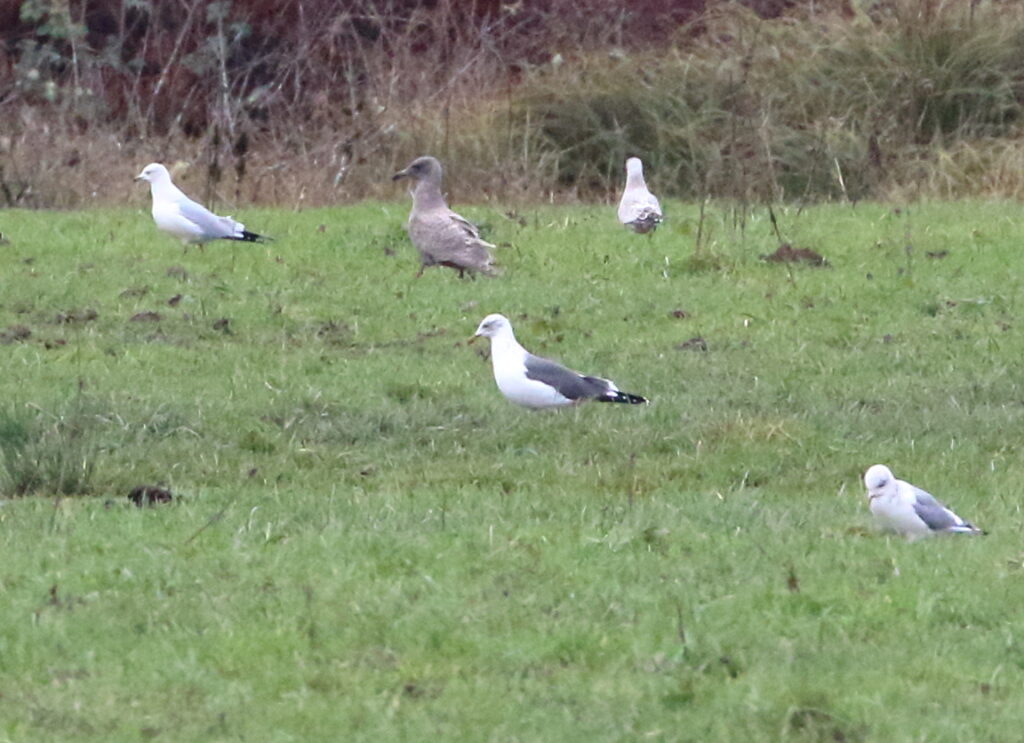
The rest of our trip, we added County, State, and Year Birds, reaching almost every goal that we had set for ourselves. For Braden that included seeing the Rock Sandpiper, breaking 100 in Oregon, and yes, ALSO breaking his Big Year Record, coming in at 335 species! For myself, I shattered every expectation, reaching 352 Accidental Big Year Birds, nudging Oregon past Idaho into the fifth spot of states with my highest totals, and scoring two unlikely Lifers, Black-legged Kittiwake and Rock Sandpiper. In fact, Rock Sandpiper, proved special for another reason. It became my 500th ABA Life Bird, a milestone long in the making.
Of course, you all know the best part of the whole deal: getting to bird with Braden again after a three-month absence. As 2022 kicks in, we look forward to a lot more birding together and apart, and wish you all wonderful, satisfying birding in the company of those you love. Sneed and Braden

